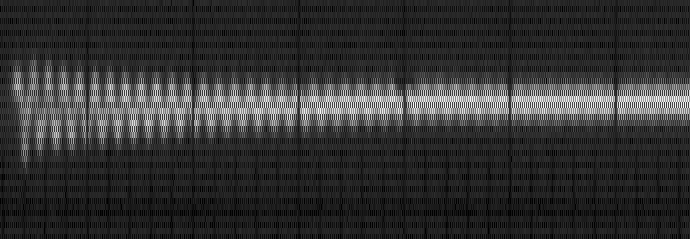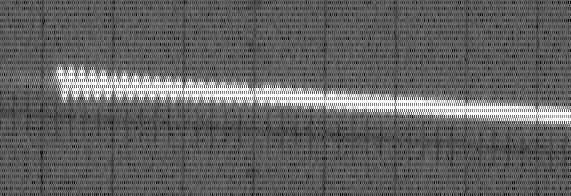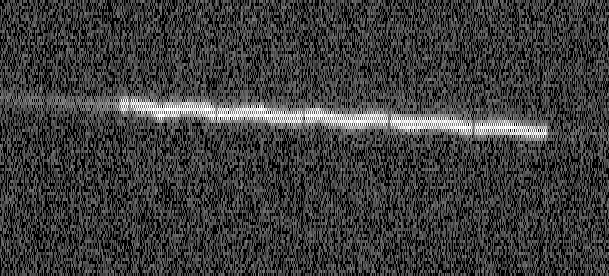Armed with the peak-to-peak (PP) amplitude and frequency of the mirror-slap initial vibration, we can calculate the shutter speed necessary to hold the vibration-induced blur to under 1 pixel. Consider the image from the preceding post, for a Nikon D800E and a Nikon 400mm f/2.8 lens, as an example. The PP amplitude was 18 pixels… [Read More]
Archives for November 2013
Sharpness testing, part 19
I performed a test of the D800E and the Nikon 400mm f/2.8 lens with the oscillocope time base set to 1/2 second per division. Here is the result magnified by a factor of 6 in the vertical dimension: Same second-order underdamped vibration. The time constant seems to be even longer than two seconds, more like… [Read More]
Sharpness testing, part 18
This is getting a little far afield from my original reason for doing the testing, but yesterday’s mirror slap results got me interested in two things: Did the D4 work the same way as the D800E? How long did it take the mirror slap vibration to decay? I put the D4 on the 400mm f/2.8… [Read More]
Sharpness testing, part 17
Since I had the 400 set up, I ran the previous tests using the D800E instead of the Leica M240. Horizontal camera orientation, shutter tripped remotely, no shutter delay: Horizontal camera orientation, shutter tripped remotely, 3 second shutter delay: Vertical camera orientation, shutter tripped remotely, no shutter delay: Vertical camera orientation, shutter tripped remotely, 3… [Read More]
Sharpness testing, part 16
I set out to see if I could see the effect of the two shutter movements — one to close it and one to open it again — that happen with the Leica M240 in live view mode. I put a Novoflex M-to-F adapter on the M240. It’s a nice little piece, with a ring… [Read More]
- 1
- 2
- 3
- …
- 5
- Next Page »



